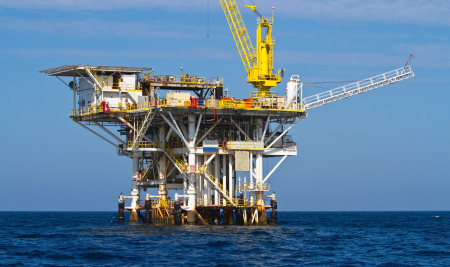 Facing the Winter on Oil Rigs
Facing the Winter on Oil Rigs
Good pay and solid benefits are the enticing attributes of working on an oil rig. To reap the financial rewards of working on a rig, workers face extreme challenges both physically and mentally. If the intense and grueling type of work was not enough, work conditions on oil rigs can be very dangerous, especially during the winter months.
A typical schedule would consist of 12 hour shifts for up to two weeks at a time and since oil rigs operate around the clock, this means long hours, day or night. As only the most extreme conditions would be cause for shut down of the rigs, workers are subject to harsh climates during their long, winter shifts.
Working in the Extreme Cold
Two weather related, medical conditions you need to be aware of when working in extremely cold temperatures are frostbite and hypothermia. Education on these conditions is very important as in extreme cases, they can be fatal.
With hypothermia, your temperature drops faster than your body can generate heat, resulting in a complete breakdown of your body’s systems. Not wearing the right type of protective clothing can contribute to hypothermia, however, if you are tired, already suffering from an ailment such as a cold or the flu, or haven’t eaten a well-balanced meal, you may also be susceptible.
The initials signs of hypothermia can include fatigue, muscle cramps, shivering and feelings of intense cold. As it persists, slurred speech, a slowed heart rate, lack of coordination and the inability to focus on tasks may also become indicators of worsening hypothermia. Recognizing these symptoms for yourself is hard enough, so workers in conditions where hypothermia is a potential risk need to be diligent about not only themselves, but also their coworkers. If you feel you see the beginning signs of hypothermia in yourself or others, seek medical attention right away.
The other condition workers are susceptible to in the cold weather is frostbite. Unlike hypothermia’s more internal affects, frostbite is identifiable from external markings. Frostbite attacks the outer layers of skin, with the first sign being a whitening of the flesh. After warming up, the skin may become red in color, like a sunburn and the affect area may be a source of swelling, itching, and pain. Here are some preventive measures to take against hypothermia and frostbite:
- Wear layers. It’s not clothes that keep you warm, but the fact that they lock in the warmth of your body. The more layers between you and falling temperatures, the better.
- Always cover your head and neck. These areas are where most of your body heat will escape.
- Choose wool or synthetic fabrics. Clothing of these types of fabric are the best to keep you warm, while cotton which “breathes” should be avoided since you don’t want to release your body warmth.
- Try to keep moving at all times.
- Avoid directly touching any metal surface.
You’re body needs plenty of nutrients and fluids for fuel, so if you’re thinking about going on a diet, the time to start is not while working on an oil rig in the winter. Although fluid intake is important, this should not include alcohol. Alcohol tends to thin out the blood vessels which does not mix well with cold weather.
The Living Conditions
When working on an oil rig, there are three options for accommodations; commuting, staying at a camp, or living on an offshore rig.
If commuting to the jobsite from a nearby home, ensure you have a dependable mode of transportation. A truck that won’t start or tires that can’t handle the cold weather conditions won’t be tolerated. If you don’t show up, someone else will gladly work to earn the high pay.
Living at a jobsite camp and living on an off shore rig are very similar. You will be provided with a place to sleep, meals and basic amenities; don’t expect anything fancy or exciting, but do prepare for tight quarters. Make sure to pack or download plenty of reading materials or other activities to keep you occupied on your off hours as Wi-Fi should be available, but may not be dependable. However, with the long and tiring days, most down time will consist of sleep.
Due to the sheer weight of the necessary equipment, along with climate changes that ensure safe ground conditions, the window of opportunity for landlocked oil rigs, makes obtaining work at these sites a seasonal opportunity. That’s not to say you won’t find work during the off season but you’ll have to be diligent and flexible to keep up your employment.





